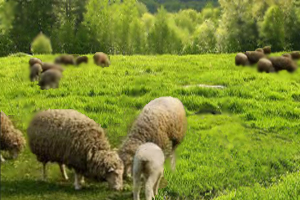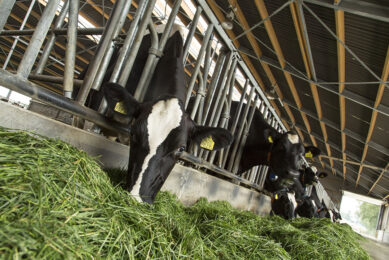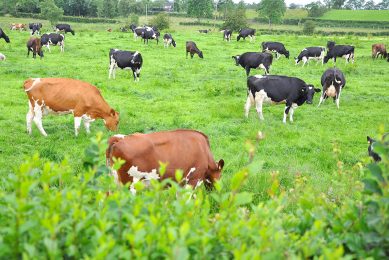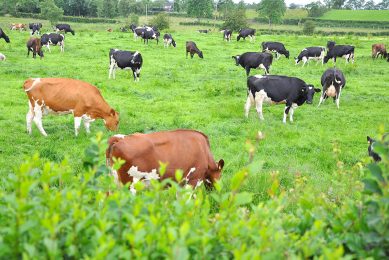How to prepare grassland for post-lambing

Many sheep producers aren’t getting the most they can out of grass. But measuring and monitoring grass growth in accordance with sheep demands during lambing could help drastically reduce feed costs and achieve finishing targets earlier.
“You have to rest leys to grow more grass and that’s the bit sheep farmers don’t tend to do. Instead, they leave sheep [grazing for too long] and don’t allow the land to rest and achieve anywhere near potential production.
“Because sheep graze it so tightly they have fantastic quality but farmers don’t grow enough quantity,” explains independent grass consultant Gareth Davies.
A key starting point is working out how much grass you have so you can start budgeting according to demand.
“You need to go out with a sward stick or plate meter and measure how much grass you have in the field.”
Mr Davies says sheep farmers should target residual covers of 1,400kg DM post-grazing.
“This ensures the three leaves have been grazed and there is sufficient material left for speedy regrowth. If you graze any tighter you will start to compromise the speed with which the plant regenerates,” he explains.
For example, Mr Davies says a 65kg ewe would need about 2kg DM/day, so for every hectare with 1,400kg DM available, farmers would be able to graze 700 ewes for one day or 350 ewes for two days.
Demand
As ewe size varies depending on breed, the best way to calculate an individual flocks’ demand is to target 3% of the animal’s bodyweight as a rule of thumb, he says.
“A ewe will require about 3% of her bodyweight in dry matter a day,” he adds. Therefore a 65kg ewe supporting a single 5kg lamb will need 2.1kg DM/day.
Mr Davies says many sheep farmers tend to turn out fewer ewes and lambs into a number of fields so they don’t need to be moved for a few weeks. But he warns this limits grass use and instead advises grouping larger numbers of sheep together.
“Put 150 on one field for three days and then shut it down and move on to the next one.”
As many fields have been flooded in recent weeks, this approach to grazing will help to prevent sward damage and encourage faster and better grass growth. “By grazing and moving you will minimise poaching damage and drastically reduce sward damage, because sheep are not on the field long enough.”
Upland sheep farmers
Mr Davies says the same principle – of measuring grass growth and feeding to meet ewe demand – can be applied to upland farms with boundaries. “Lowland farmers will naturally tend to grow more grass than upland farms because of their location, so upland farms need better grass management to compensate.”
He says using rotational grazing would allow farmers to better adjust supplementary feeding requirements, thereby reducing waste and costs.
Prioritising grazing for lambs
Farmers weaning between May and August should plan ahead and make sure desired fields for grazing are shut up 22-25 days pre-turnout. “During this period you would expect to have a minimum of 40kg DM/day of growth, assuming you have enough moisture in the soil. I would always suggest targeting a 1,400kg DM residual,” he adds.
Lambs require a daily dry matter intake of 3% of their bodyweight – the same as lactating ewes – so a 25kg lamb would need 0.75kg DM/day, explains Mr Davies.
However, as this figure continually changes as lambs get fatter, farmers need to monitor groups to get a good idea of average weights. “You need to weigh a proportion of them every 14 days so you have a pretty good idea of average weights to make sure you’re giving them an increase in dry matter to accommodate for the increased body weights.”












